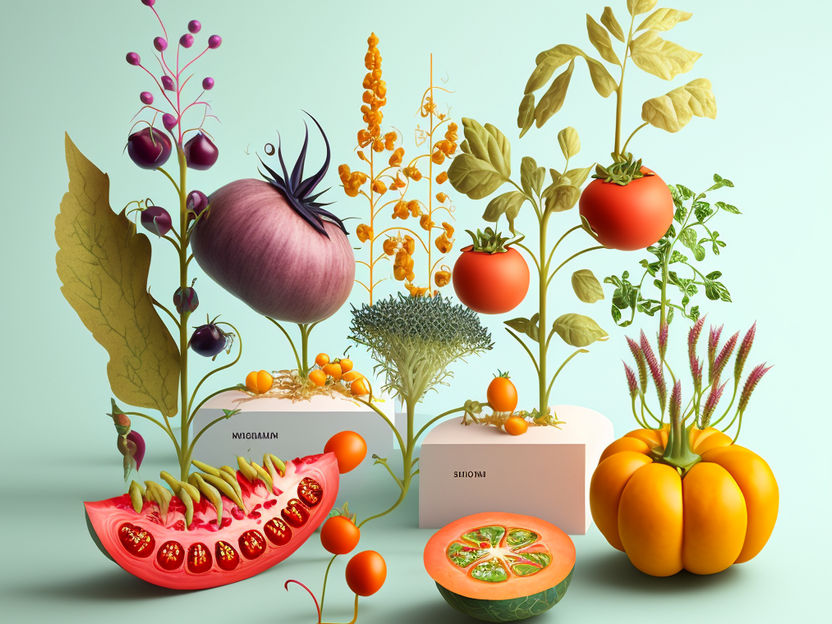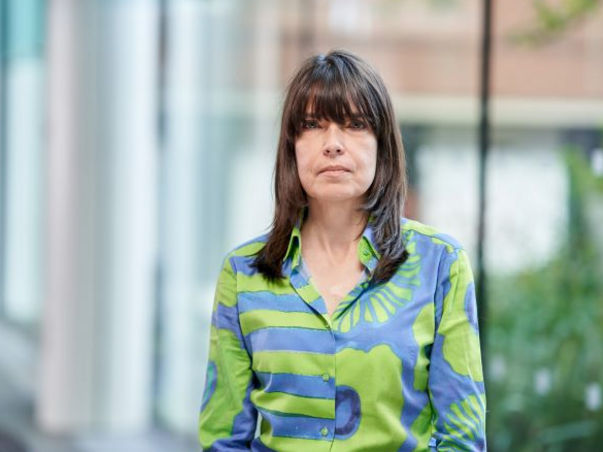With a combination of old method and modern technology to new plant varieties
Researchers at the Max Planck Institute for Molecular plant physiology have succeeded in producing stable gene-edited plants that are indistinguishable from classically bred or naturally occurring mutations using a clever combination of classical plant grafting and state-of-the-art molecular biology that they developed. This newly developed method is also capable of breeding plants with desired traits more quickly and can be used in a wide range of plants where gene editing could not be used previously. The researchers have published their results in the journal Nature Biotechnology.

Symobl Bild
Computer generated picture
The development of new plant varieties as food, for energy production and as raw material suppliers for industry is an important field of research and development in view of changing climatic conditions and the associated need to accelerate the move away from fossil resources. In classical plant breeding, plants have to be selected, crossed, propagated and studied over many generations until a new variety with the desired properties is created.
Modern genetic engineering methods can speed up this process enormously. The discovery of the so-called gene scissors CRISPR/Cas now makes it possible to quickly and specifically modify genes in plants to produce plants with the desired characteristics. Although breeding with CRISPR/Cas already takes less time than classical breeding methods, it still takes some time until the plants reach market maturity, because the previously introduced CRISPR/Cas (foreign) DNA has to be removed from the plant again in a time-consuming process, because otherwise it could disrupt the genetic stability of the plants in the long term.
Dr. Lei Yang and Dr. Frank Machin, together with other colleagues from the research group of Dr. Friedrich Kragler at the Max Planck Institute for Molecular Plant Physiology in Potsdam, have developed a novel method as part of a project funded by the BMF and ERC, which makes it possible to dispense with lengthy backcrossing. Already in the first generation, this method can be used to produce genetically modified seeds that no longer contain any foreign DNA and are indistinguishable from traditionally bred or naturally evolved plants.
Basics of the new method
All the information a plant needs to live and grow is stored in the form of DNA in the nucleus of each individual cell. Encrypted in the DNA are the blueprints for proteins, the practical players that do all the work in the cell and essentially determine the characteristics of an organism. Since the genetic information is very valuable, it must not be damaged under any circumstances and therefore always remains in the cell nucleus. However, the conversion of DNA into proteins takes place in the cell plasma. For this purpose, parts of the DNA are translated into a short-lived transport form, the so-called messenger RNA (mRNA). This process is called transcription.
Dr. Kragler explains: "The so-called gene scissors CRISPR/Cas are themselves introduced as a DNA sequence into the plant DNA in the cell nucleus and consist of two components. Firstly, the so-called guide, which has a base sequence that corresponds to the base sequence at exactly the point in the plant DNA that is later to be modified by the gene scissors. The other is the sequence for the gene scissors themselves, the protein CAS9, which is capable of cutting plant DNA. CRISPR/Cas technology can thus be used to trigger changes in the plant's DNA at a precisely defined point. After the desired change is achieved, however, in previous methods the DNA sequence of the gene scissors itself must still be removed from the plant's cell nuclei through complex backcrossing."
Using new technique with old method
The twist in the story is that a technique more than 2,000 years old, grafting - normally used to graft fruit trees and vines - can be used to instantly produce plants and seeds that have the new traits but do not contain foreign DNA.
To achieve this, the researchers* cut the stem of a plant whose nuclei contain DNA from the genetic scissors above the rootstock and grafted the shoot of a genetically unmodified recipient plant onto it. As the research group led by Friedrich Kragler has already discovered in earlier work, rootstock mRNAs with specific properties can be transported all the way to the flower tissue. The researchers have therefore adapted the DNA sequence of the gene scissors so that the mRNA copies are sent from the rootstock to the genetically unmodified, above-ground parts. There, the gene scissors protein is then also produced from the mRNA in the flowers of the plant, causing the corresponding changes in the plant cells. Some of the seeds that emerge from these flowers then already carry the desired gene modification in the next generation. However, they are free of any foreign DNA and are indistinguishable from naturally evolved variants.
Many cultivated plants can be crossed with difficulty or not at all, or have very long generation times, such as fruit trees. If one wanted to get the foreign DNA out again by crossing, this would take many years. Here, the genetic engineering approach to grafting could open up new possibilities for breeders that have been denied to this area until now. But Dr. Kragler sees entirely different applications for this new technique, as many crops are inaccessible or difficult for CRISPR/Cas9 genetic scissors to access: "So far, targeted genetic engineering methods have only been established for a few, very well researched plants such as tobacco or field thale cress. But since grafting by grafting often works between many not-so-closely related species and rootstocks can be easily propagated, it is conceivable that a rootstock can be used multiple times to selectively provide plants of different species or cultivars with desirable new traits." This combination of old methods and modern molecular biology could therefore be used to breed new varieties quickly and inexpensively in the future.
Note: This article has been translated using a computer system without human intervention. LUMITOS offers these automatic translations to present a wider range of current news. Since this article has been translated with automatic translation, it is possible that it contains errors in vocabulary, syntax or grammar. The original article in German can be found here.





























































